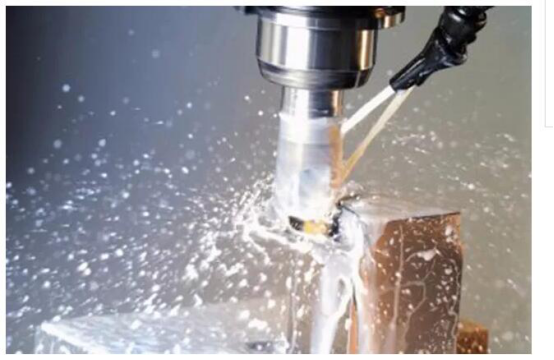According to data from Kline & Co. Consulting, the compound annual growth rate (CAGR) of synthetic metalworking fluids is expected to reach 3% to 3.5% by 2021. However, opinions within the industry remain divided on whether full synthetic or semi-synthetic metalworking fluids are the better choice.
A study conducted by Caterpillar Inc. in 2015 showed that full synthetic metalworking fluids offer a longer service life and lower production costs, providing better lubrication performance compared to semi-synthetic fluids.

The Debate Between Full Synthetic and Semi-Synthetic Metalworking Fluids
Full synthetic metalworking fluids are gaining increasing attention due to their superior lubrication properties, low additive content, and moderate foaming characteristics.
To evaluate the advantages and disadvantages of full synthetic versus semi-synthetic metalworking fluids, a professional team conducted a study at a company that primarily uses full synthetic metalworking fluids in its metal cutting, lathe operations, and other machining processes. During the research, it was found that full synthetic fluids brought numerous benefits to the metalworking process. The team then decided to compare the lubricity of full synthetic fluids with that of semi-synthetic mineral oil and synthetic oils, aiming to determine whether the use of synthetic materials could further enhance the lubrication performance of metalworking fluids.
"I was surprised to find that full synthetic metalworking fluids showed better lubricity in laboratory tests," said Allison Drais, the lead engineer on the research team. Traditionally, it has been believed that semi-synthetic fluids, due to their mineral oil content, offer better performance. She pointed out that higher oil content is generally associated with improved lubrication — which is why polymers are often used more extensively in synthetic oils than in mineral oils.
The study revealed that synthetic materials exhibit superior performance in areas such as cleanliness, biostability, chemical maintenance, service life, anti-aging properties, and corrosion protection, making them particularly suitable for machining applications.
However, semi-synthetic fluids are often better suited for protecting machining equipment from corrosion. According to Brian Hovik, Market Manager at BASF, a manufacturer of metalworking fluids and additives: “When it comes to extreme machining conditions requiring additional lubrication or boundary protection, semi-synthetic fluids have the upper hand.”
Jeffery Mackey, Vice President of Yushiro Manufacturing America, noted: “Due to the types of components used, semi-synthetic fluids are often preferable.” He explained that ingredients such as wetting agents and glycol ethers can cause synthetic fluids to dissolve or degrade seals.
“The biggest drawback of synthetics is that they can be harsher on equipment,” said Lon Fanning, Head of Research, Development, and Technical Support at DuBois Chemical. “Some machines simply cannot be lubricated effectively with synthetic oils.”
Bacterial growth in synthetic oils is not a major issue, meaning there’s no need to formulate the fluids with biocides. “Because they don’t support bacterial growth,” Fanning added, “they have a long shelf life.” Another key point is that the lack of emulsifiers in synthetic oils reduces viscosity, otherwise pump pressure would increase with smaller tank sizes, making oil extraction more difficult.
Many believe that the low demand for biocides and the extended service life justify the higher cost of synthetic oils. However, Hovik disagrees. “There are many semi-synthetic oils on the market that offer even longer shelf life without or with minimal use of biocides to maintain fluid stability,” he stated. “These semi-synthetics can gain a price advantage.”
Currently, due to increasing restrictions on formulation additives for metalworking fluids, the use of synthetic formulations is growing. Traditional synthetic oils are typically based on polyalkylene glycols, offering high lubricity, low additive levels, and moderate foam control — making them more competitive in metalworking fluid formulations. “However, the higher cost limits widespread market demand for full synthetic metalworking fluids,” explained industry experts.
Some experts claim the market is shifting from soluble oils and synthetics toward semi-synthetics. “Without considering issues like sump life or environmental, health, and safety concerns, today’s market offers many semi-synthetic products that combine the lubricity of soluble oils with the cleanliness of synthetics,” one expert said.
Another expert predicted: “In the long run, semi-synthetic fluids will offer longer service life and less damage to machine tools compared to full synthetic fluids.”
Disclaimer:
This article is reprinted from China Lubricating Oil Network. The website assumes no responsibility for the content. If any copyright infringement occurs, please contact us to request removal.
Contact: +86-20-82118890